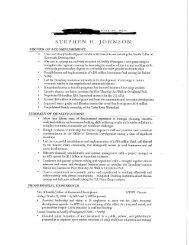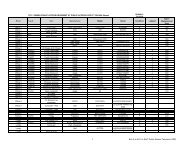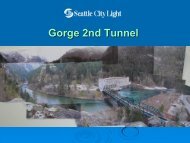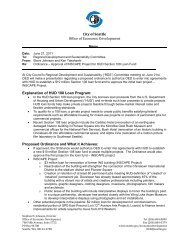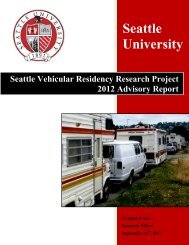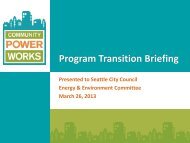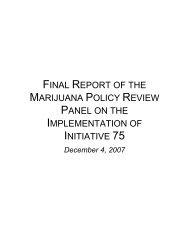2013 Water System Plan, Volume II - Seattle City Clerk's Office - City ...
2013 Water System Plan, Volume II - Seattle City Clerk's Office - City ...
2013 Water System Plan, Volume II - Seattle City Clerk's Office - City ...
You also want an ePaper? Increase the reach of your titles
YUMPU automatically turns print PDFs into web optimized ePapers that Google loves.
Chapter 5 <strong>Water</strong> Infrastructure<br />
5.6.3.4 Bedding and Backfill<br />
The design engineer must require sand bedding for water mains unless another agency dictates<br />
otherwise. Sand bedding creates a less corrosive environment around a pipe than does native<br />
soil. Sand bedding also eliminates point loads on the pipe caused by stray rocks. Sand bedding is<br />
typically Class B, Sand Mineral Aggregate Type 6 or 7 unless otherwise specified. Note: Type 9 is<br />
for transmission mains.<br />
Backfill is either suitable native material, Mineral Aggregate Type 17, or other material as<br />
approved by the design engineer. For suitable native backfill material, see Standard Specification<br />
7-10.3(10) for requirements. For requirements for Mineral Aggregate Type 17, see Standard<br />
Specification 9-03.16.<br />
For more information on bedding and backfill, see Standard Specifications 7-10.3(9), 9 03.12(3)<br />
and 9-03.16.<br />
A. Standard Trench Section<br />
For requirements for a standard trench section, see Standard <strong>Plan</strong> 350.<br />
B. Controlled Density Fill<br />
Sometimes an outside agency, time constraints, or compaction will require that a water<br />
main be bedded and backfilled in controlled density fill (CDF). When this requirement<br />
outweighs the benefit of using sand bedding, a metallic water main must be coated both<br />
where embedded in CDF and for some distance beyond the CDF encasement. Typically,<br />
SPU uses either two layers of 5-foot-wide visqueen or two polyethylene bags over the<br />
main to keep it separated from the CDF (Figure 5-4).<br />
When CDF is used near the metallic pipe, a corrosion specialist should be consulted<br />
because CDF can create a corrosion cell.<br />
The CDF used to encase the water main must be the weaker (diggable) CDF mix. All CDF<br />
must be ⅓ sack mix, less than 200 psi, and preferably less than100 psi. SPU has<br />
approved various types and uses of CDF. CDF can be used as a trench plug, trench<br />
backfill, or for grouting an annular space. Each use has a different mix ratio. The design<br />
engineer must reference the <strong>City</strong> Standard <strong>Plan</strong>s and Specifications for each CDF use.<br />
See Standard Specification 9-01.5.<br />
When CDF is used to fill pipe and the annular space between two pipes, it must have<br />
100 psi strength at 28 days. See Standard Specification 9-05.15.<br />
SPU Design Standards and Guidelines<br />
5-19



